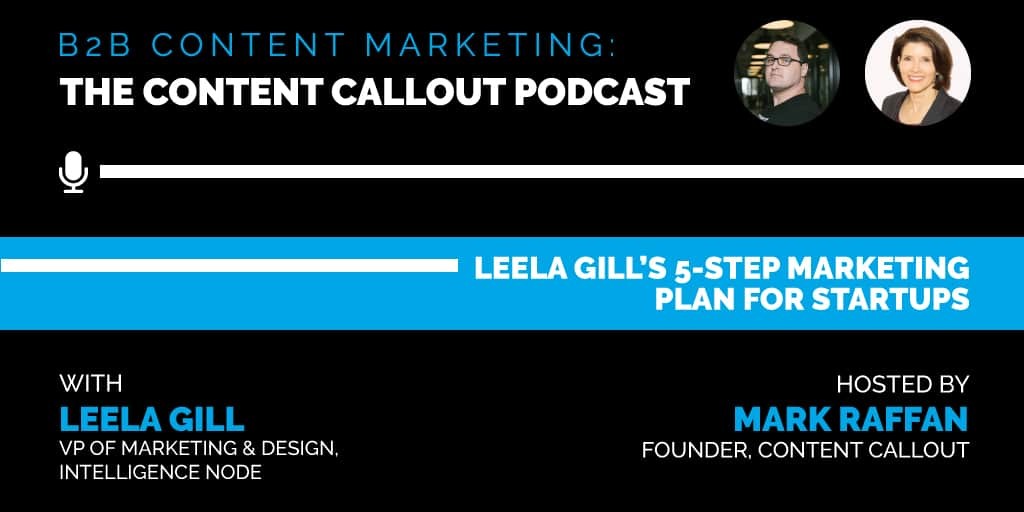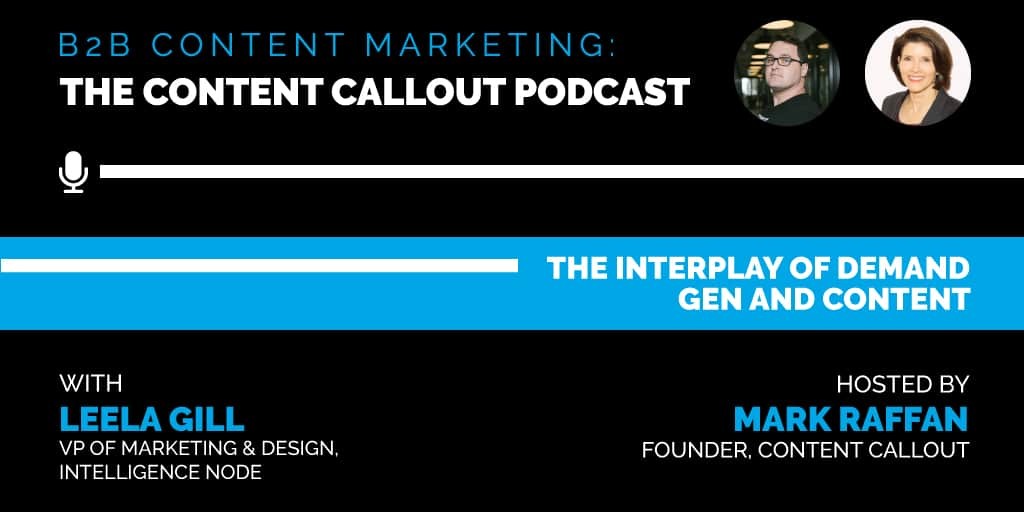Building A Diverse And Equitable Business: The Role Of Marketing
Jesse Jackson once said, “Inclusion is not a matter of political correctness. It is the key to growth.”
This is more evident now than ever before. There is no question for me that prioritizing diversity, equity and inclusion (DEI) in companies of every size and in every industry comes with a renewed sense of urgency in the United States today.
When you think about which department within an organization should be most focused on prioritizing DEI, human resources may come to mind. However, diversity isn’t just an internal HR matter; marketers have an opportunity and a responsibility to put diversity at the forefront of their thinking when they’re hiring colleagues, creating content and planning campaigns.
Why marketing?
Marketers have access to communications and media that can change DEI from an initiative to an integral part of a company’s culture and its brand. It is marketers who translate corporate strategy and brand concepts into the words, images and messages the company uses both internally and externally. Simply put, marketers are change agents. And putting DEI at the forefront of our marketing campaigns is a responsibility we should own.
DEI can help grow the business and build loyalty.
In an August 2020 report on the retail and consumer goods markets, McKinsey points out that consumers are showing a preference for brands and retailers they trust and that it’s important for companies to demonstrate social responsibility. Consumers are changing their attitudes about where to buy and voting with their wallets: According to a 2019 survey from Markstein and Certus Insights (via Businesswire), “46% [of consumers] pay close attention to a brand’s social responsibility efforts when they buy a product.” Those companies that put words into action to address DEI will likely be rewarded.
Forward-thinking companies like Verizon understand this shift. In April 2021, Verizon announced that it is rolling out a new set of goals around how it approaches DEI in all aspects of its marketing operations, including a commitment to spend 30% of its budget on “diverse-owned video, experiential and print production firms” and other initiatives that take into account an industry-wide gender equality measure. According to Verizon CMO Diego Scotti, “Corporate social responsibility isn’t the thing you do on the side in terms of philanthropy — you must move it to be central to your strategy.”
The bottom line is that if our audience sees themselves reflected in our company’s marketing campaigns, they will take notice. And, in today’s environment where getting above the noise is difficult, taking an authentic approach to diversity and equity can help you garner the attention your brand needs to build a loyal following.
How diverse is your marketing team?
Marketers are the company’s experts in language, imagery and prose. Marketers know how to apply these communication techniques to best serve the company’s employees, prospects and customers. How can we ensure that those featured in these critical marketing assets are properly represented? First, take a step back and ask yourself if your team accurately mirrors the diversity initiatives you are seeking to prioritize. No matter how empathetic and open-minded the people on your marketing team may be, a less diverse team can be a silent barrier to inclusive marketing. Aim to build a team composed of colleagues who come from diverse backgrounds. This action can help your stories resonate with your employees, prospects and customers.
According to a recent Glassdoor survey, job seekers and employees want employers to step up their transparency around DEI. If employers don’t, they may miss out on retaining top talent. About one in three employees and job seekers (32%) would not apply to a job at a company that lacks a diverse workforce. If you haven’t been thinking about this already, now is the perfect time to modernize your team’s hiring strategy and include DEI as a priority. If you need further incentive, McKinsey explains “that diverse teams are more innovative — stronger at anticipating shifts in consumer needs and consumption patterns.” This dynamic could translate into a real competitive advantage.
Is your content diverse, and does it reflect those you seek to engage?
Just like Rome wasn’t built in a day, an inclusive brand marketing program often takes significant time and effort. The first step is understanding just how well your marketing efforts reflect your brand. Take a look at your customer-facing campaigns and programs. Who are the faces behind your marketing content? Your products may be for everyone, but if your images and videos lack racial and age diversity, they may not resonate with employees, prospects and customers. After all, the goal of your content should be to create an emotional connection with your audience.
Next, look at the tone of voice and words you are using in your writing. Make sure the language you’re using will resonate with your target audience, and be careful when using jargon and slang. When you’re thinking about storytelling, be intentional about using diverse perspectives.
Some marketing professionals are making progress on these initiatives, but for others, there is a long way to go before inclusive and diverse marketing becomes the norm. As company leaders, we have a responsibility to help ensure that DEI is part of our conversations and implemented in our campaigns. And we can take on the role of helping the CEO recognize the importance of DEI for growing the business.
It’s important to check yourself.
Ask yourself, “As a marketing leader, do I know what our company’s DEI goals are? Am I leading in a way that prioritizes DEI?”
If not, take action. Consider inviting DEI representatives to team meetings when you’re planning or refreshing campaigns. Open up the dialog and be bold about talking about this priority with your team. With your CEO, find examples of how you are bringing DEI to life within the company and garner support.
I believe we will see progress as more marketing leaders embrace their responsibility in prioritizing DEI and, specifically, take actionable steps to align the internal values of the company with the external brand messaging. Marketers are change agents. And we have the power to lead a DEI transformation.
Related Posts:
Influencers, Brand Ambassadors and Raving Fans – and Why You Need All Three
For marketers, influencers, brand ambassadors, and raving fans can create a significant differentiator…
Marketing as a Revenue Generator and Catalyst for Change
Marketing is a change catalyst, calling customers to change and jump on, and it also helps the organization…
A Guide To Navigating Startups as a Marketing Leader
It can’t be understated: Being a marketing leader of a startup can be crazy and chaotic. Out of the million…
A 5-Step Marketing Plan for Startups
As a marketing professional working in a startup, do you know how to help your company grow revenue? How is…
Building A Diverse And Equitable Business: The Role Of Marketing
Jesse Jackson once said, “Inclusion is not a matter of political correctness. It is the key to growth.” This…
B2B Marketing: What We Can Do To Help Save The Planet
The COVID-19 pandemic is the biggest business challenge of a generation. Organizations scramble to establish…
The Interplay of Demand Gen and Content with Leela Gill
The COVID-19 pandemic is the biggest business challenge of a generation. Organizations scramble to establish…
Early-Stage Marketing: A Five-Point Leadership Framework
The COVID-19 pandemic is the biggest business challenge of a generation. Organizations scramble to establish…
Social Media: Getting Above the Noise
The COVID-19 pandemic is the biggest business challenge of a generation. Organizations scramble to establish…
B2B Marketing: What We Can Do To Help Save The Planet
As B2B marketing leaders, we have a lot riding on our shoulders: Listening to customer needs, accelerating business growth, driving product innovation and, now, driving social and environmental awareness. In the wake of 2020, one of the most disruptive social and environmental years in our recent history, we know it’s not just about growing revenue; it’s about growing our businesses responsibly.
Recently, to my surprise, I received a heavy 2x3x2 foot box at my doorstep as part of a direct mail marketing campaign. As I opened the box and pulled out layers of plastic and bubble wrap, I wasn’t just thinking about the gift, I was thinking about the cost to the environment. I unveiled my gift to find a six-pack of beer with an accompanying 10-page analyst report. Not being a beer drinker, I laughed at first. Then I started thinking, what is the role of marketing when it comes to helping save the planet?
Let’s start with some statistics. Did you know that only about 32% of America recycles, down from 34.7% in 2015? Or that Americans can generate as much as 1,800 pounds of landfill per person per year? With a population of more than 331 million, just think about that number for a minute.
Over two-thirds of U.S. consumers say it’s important for companies to reduce their impact on the environment, with the percentage jumping to 83% for Millennials ages 21 to 34. With 44% of Millennials acting as the primary decision-makers in today’s buying economy, it’s crucial for marketing teams to demonstrate alignment on these issues. In fact, 83% of Millennials want companies to align with their values, which should speak volumes to marketing leaders.
We have hit a tipping point when it comes to the environment. And yet, we are still not acting fast enough. Marketers play a key role in making sure the right decisions are made for their company. So, as marketing leaders in the richest economy in the world, here are a few small ways we can help save the planet:
1. Eliminate the plastic swag and limited-use accessories.
2020 was a wash for in-person events, but as cities continue to fully reopen and people start to become more comfortable traveling and gathering, in-person events and conferences are coming back.
According to Northstar Meeting Group data from May, 82% of planners surveyed expect to hold live events this year. Much has changed this past year, and it’s time for marketers to rethink their swag strategy at these events. Cheap branded tote bags, t-shirts and pens are generally ineffective, overused ways to increase brand awareness, as they tend to not be used after the event and eventually end up in the trash.
It’s time for marketers to transform their strategy at conferences. Studies have shown that more and more people value experiences over things, so why not offer a unique experience that will result in a positive association for your brand? Consider hiring a photographer to take attendees’ headshots at the conference, hiring massage therapists to give free chairs massages or even giving away coupons to support a local restaurant in the area (that has undoubtedly struggled this past year).
Another idea is to have a spinning wheel at your booth with a number of prizes that involve experiences (or if you’re branding something, consider high-end chocolate or coffee). I promise more people will be at your booth than the one next door that’s offering branded t-shirts and pens.
2. Choose alternatives to shipping cardboard boxes and plastic wrap.
As climate change and the impacts of consumer behavior sink in, people are paying attention to what companies are doing to reduce their environmental footprint. That starts with the marketing team’s decisions.
Five years ago, a six-pack of beer might have been positively received, but nowadays, even if the recipient likes beer, they may not see past the plastic and the cost of sending something through the mail that they could have purchased at the grocery store three blocks away. Next time, consider sending them a redeemable coupon for that six-pack instead. You could even think beyond the alcohol and offer gift cards, non-profit donations in their name, food donations, tree plantings or a handwritten note.
3. Guide recipients on how to dispose of shipping materials.
The language you use to communicate how to recycle is critical and has come a long way over the past two decades. According to recent data, “organic” was used in less than 2% of all mail from 2000 to 2004, but is now used in nearly 38% of all mail pieces. “Sustainable” went from 1.64% in the early 2000s to over 36% between 2017 and 2021. And “please recycle” grew the most, from 0.31% between 2000 and 2004 to nearly 60% today.
If you are set on sending out direct mail, make sure you guide your recipients on the best way to dispose of the packaging. And remember, just over one-third of America is recycling today, so this should be the last resort. It’s better for the environment to eliminate the shipping costs in the first place.
We can help save the planet.
When thinking about your marketing campaigns, especially direct mail and events, ask yourself: How can I accomplish my goals in the most environmentally responsible way? Then, take real action. A famous Chinese proverb says, “The best time to plant a tree was 20 years ago. The second best time is now.” In the same vein, there’s no better time than right now for marketing leaders to show up for their company, consumers and the environment.
Related Posts:
Influencers, Brand Ambassadors and Raving Fans – and Why You Need All Three
For marketers, influencers, brand ambassadors, and raving fans can create a significant differentiator…
Marketing as a Revenue Generator and Catalyst for Change
Marketing is a change catalyst, calling customers to change and jump on, and it also helps the organization…
A Guide To Navigating Startups as a Marketing Leader
It can’t be understated: Being a marketing leader of a startup can be crazy and chaotic. Out of the million…
A 5-Step Marketing Plan for Startups
As a marketing professional working in a startup, do you know how to help your company grow revenue? How is…
Building A Diverse And Equitable Business: The Role Of Marketing
Jesse Jackson once said, “Inclusion is not a matter of political correctness. It is the key to growth.” This…
B2B Marketing: What We Can Do To Help Save The Planet
The COVID-19 pandemic is the biggest business challenge of a generation. Organizations scramble to establish…
The Interplay of Demand Gen and Content with Leela Gill
The COVID-19 pandemic is the biggest business challenge of a generation. Organizations scramble to establish…
Early-Stage Marketing: A Five-Point Leadership Framework
The COVID-19 pandemic is the biggest business challenge of a generation. Organizations scramble to establish…
Social Media: Getting Above the Noise
The COVID-19 pandemic is the biggest business challenge of a generation. Organizations scramble to establish…
Early-Stage Marketing: A Five-Point Leadership Framework
It is estimated that over a million tech startups are formed every year globally. And, according to an article on TechCrunch, about 60% of startups don’t make it to Series A and even less make it to Series B and beyond. The takeaway? Early-stage companies are like a swimming frenzy of baby sea turtles — survival is rough and the odds are tough.
For those of us who play in this world, we feel that pressure every day. Early-stage marketing leaders are in the hot seat. Some might say it is the penultimate driving force for creativity. We must create something from nothing to survive and then help it grow, fast.
We all know that startup companies are fast-paced and experimental by nature — the antithesis of the process-oriented and predictable large enterprise. However, implementing a few repeatable strategic business practices can help Series A and B teams navigate the ready-fire-aim environment with purpose. It’s true that there is no silver bullet, but this five-point leadership framework can help marketing leaders reach the next stage of development.
1. Audit where you are every quarter.
One of the most important priorities for early-stage marketing leaders is to develop a clearly defined ideal customer profile (ICP), as this can mean the difference between effective campaigns and ones that fail. One of the first habits to form is auditing your closed-won deals every quarter and mapping the top five to 10 attributes that made them an ICP for your business. Then, look at your sales qualification criteria and determine if you are asking the right questions to generate viable leads. If not, revise and retrain your teams.
Growth marketers should also audit:
• The buyer persona: Have you correctly characterized the person within the ICP to whom you want to sell? It is very likely that your ICP and personas will change over time, so this auditing process will help you adjust quickly when needed.
• Brand promise: Has it been established, and are you sticking to it?
• Value proposition: Do your ICP and personas agree with your company’s value proposition? When you talk to your customers, are you using the words they use when they describe the benefits of your solution?
• Customer relationship management (CRM): Are you keeping your data clean and segmented so you can communicate effectively with prospects?
• Collateral: Does your collateral cover the fundamental content needs, including proper sales messaging, product sheets, brand and product videos, best practice e-books and SEO blog posts?
2. Focus your budget on conversion and pipeline growth.
It’s tempting to want to do it all — brand, demand, fancy tech stack, PR, AR and more — but at this stage, your marketing budget needs to be allocated to generating qualified leads for your sales team. Period. Focus your dollars on activities like paid advertising, events and content that converts.
What should your budget be? According to a recent SaaS-Capital benchmark report, early-stage SaaS companies can spend approximately 15% of annual recurring revenue (ARR) on marketing. So, if your ARR is $5M, you can expect a marketing budget of around $750K, of which approximately 45% to 50% should be spent on headcount and the remainder allocated to programs.
And according to one article, if you are well-funded, your customer acquisition cost (your total sales and marketing cost divided by the number of closed deals) can be up to 50% of your first-year average contract value.
3. Quantify team strengths, hire for the gaps and upskill constantly.
In the beginning, you will hire one or two marketers. This team must be versatile and capable of managing multiple components of marketing all at once, including content, demand generation and search engine marketing (SEM) basics. Don’t make the mistake of hiring junior people; you need team members who can run programs without much assistance.
When you get to Series B, you should have the core marketing skill sets on board: product marketing, marketing operations, content SME, demand gen, digital and creative. If you are missing any of these core skills, you should fill the gaps with an agency or upskill your team.
To grow, you need to honestly assess your team’s strengths. Take the time to create a quarterly performance process that includes a skills audit and builds in upskilling and learning as part of your marketing culture.
4. Align around product strategy.
To create focus and speed, align your marketing events around the product road map and push for new product events every quarter. This operating model, also known as “the cadence methodology,” was developed by venture capitalist and former Yammer CEO David Sacks. This model works because the whole company focuses on product innovation. Then, it is marketing’s job to promote the new features every quarter via event marketing.
5. Take aim at your exit criteria.
In the B round, revenue expectations are high and forgiveness is scarce. As a marketing leader, you need to grow while keeping your eye on your exit criteria: Series C funding. Here is my punch list to ensure you get to the next funding round:
• A clear definition of your target market, ICP and persona.
• A documented and proven brand promise and value proposition.
• Alignment and broad communication of the go-to-market strategy from senior leadership.
• Excellent sales and marketing alignment around process and tech stack.
• Knowledge of the most effective marketing channels.
• A quarterly business cadence and reporting framework.
• Documentation of your key processes (to scale).
• Customers who talk about your products positively and often.
• Hitting your revenue growth goals.
As early-stage marketing leaders, we face a myriad of challenges, but a strong leadership framework — one that centers around building good habits and processes early — can exponentially increase your chances of receiving Series C funding and beyond.
Related Posts:
Influencers, Brand Ambassadors and Raving Fans – and Why You Need All Three
For marketers, influencers, brand ambassadors, and raving fans can create a significant differentiator…
Marketing as a Revenue Generator and Catalyst for Change
Marketing is a change catalyst, calling customers to change and jump on, and it also helps the organization…
A Guide To Navigating Startups as a Marketing Leader
It can’t be understated: Being a marketing leader of a startup can be crazy and chaotic. Out of the million…
A 5-Step Marketing Plan for Startups
As a marketing professional working in a startup, do you know how to help your company grow revenue? How is…
Building A Diverse And Equitable Business: The Role Of Marketing
Jesse Jackson once said, “Inclusion is not a matter of political correctness. It is the key to growth.” This…
B2B Marketing: What We Can Do To Help Save The Planet
The COVID-19 pandemic is the biggest business challenge of a generation. Organizations scramble to establish…
The Interplay of Demand Gen and Content with Leela Gill
The COVID-19 pandemic is the biggest business challenge of a generation. Organizations scramble to establish…
Early-Stage Marketing: A Five-Point Leadership Framework
The COVID-19 pandemic is the biggest business challenge of a generation. Organizations scramble to establish…
Social Media: Getting Above the Noise
The COVID-19 pandemic is the biggest business challenge of a generation. Organizations scramble to establish…
6 Priorities for Marketing Leaders to Help Drive Business Recovery
The COVID-19 pandemic is the biggest business challenge of a generation. Organizations scramble to establish continuity. We’re redefining “essential” and building the capacity for remote work, concepts that were previously resisted by many leaders. Because revenue is uncertain, layoffs have come, even though there’s a lot of work still to do. Marketers are equipped and positioned to help stem the panic, save jobs now, and facilitate as fast a recovery as possible.
Surviving a crisis and planning for recovery begins with a search for ideas.That is the stock and trade of marketing. We can use existing communication channels to move a constructive narrative between customers and prospects and leaders in our own organizations. The core critical message is to move beyond short-term thinking.
Here are specific themes to communicate:
1. Connect and communicate more.
We know that crisis is emotional but we may forget the human impact. People may not be producing at their typical levels of either volume or quality for a variety of reasons including adapting to new work norms or accommodating family schedules. As marketing leaders, we can remind ourselves and our bosses that gratitude and inspiration are expressions that will payout dividends now and in the future. And frequent communication is critical. When contacting employees, customers, or the general public, a leader’s voice is more important than ever. You can’t post the same messages at the same frequency as if nothing is happening. Nor should we hide or be silent. Now is the time to emotionally connect and communicate more with your employees, customers and your pipeline.
2. Tell unique, authentic stories.
This is an excellent time to put your company’s unique values on display. Your choices differentiate you from other organizations. Pause the routine automated messages and craft tailored messages about how you can help. Customers want to know what you are doing to protect their interests: from how you’re treating your employees, how your products can help them right now, how you’re keeping them safe, and what your plans are for recovery. These specifics clarify your company’s identity in the mind of your customers and prospects.
3. Redirect teams to strategic projects.
Most organizations run lean. Corporations expect high productivity from full-time employees and use contingent workers like contractors for maximum efficiency. Even so, many important-but-not-urgent projects never get off the ground. Now might be the time to move on that work, especially those projects that can be disruptive when you are busier. Build out core processes or think about your supply chain optimization.
4. Invest in training.
Your team is working from home, and many online providers are offering their wares for free or at discounted rates. Review training and certification requirements and encourage team members to cure any lapses. While they shelter in place, people can renew certifications or get new ones. This is also a good opportunity to identify learning and development goals and devise long-term plans.
5. Trim costs without trimming people.
Look for costs that can be cut down quickly as compared to production costs. For example, paid advertising when buyer budgets are tight may not provide the return you need in the short-term. Consider re-evaluating your tech stack and if it’s not being used optimally, trim these costs first before considering reducing staff.
6. Spend more time with customers.
Replacing automated chatbots with live human beings can offer customers the contact they crave while sheltering in their homes. Set up meetings to check in. Find out what’s working and what’s not. You may discover inexpensive ways you can meet customers’ special needs in this time of crisis. There is no better loyalty program.
Sooner or later, business will bounce back and economic recovery will become the most urgent focus. Companies that have maintained their experienced staff, strengthened their internal processes, and listened more intently to existing customers will be the ones that get a jump-start on market growth in a post-covid era.
Related Posts:
Influencers, Brand Ambassadors and Raving Fans – and Why You Need All Three
For marketers, influencers, brand ambassadors, and raving fans can create a significant differentiator…
Marketing as a Revenue Generator and Catalyst for Change
Marketing is a change catalyst, calling customers to change and jump on, and it also helps the organization…
A Guide To Navigating Startups as a Marketing Leader
It can’t be understated: Being a marketing leader of a startup can be crazy and chaotic. Out of the million…
A 5-Step Marketing Plan for Startups
As a marketing professional working in a startup, do you know how to help your company grow revenue? How is…
Building A Diverse And Equitable Business: The Role Of Marketing
Jesse Jackson once said, “Inclusion is not a matter of political correctness. It is the key to growth.” This…
B2B Marketing: What We Can Do To Help Save The Planet
The COVID-19 pandemic is the biggest business challenge of a generation. Organizations scramble to establish…
The Interplay of Demand Gen and Content with Leela Gill
The COVID-19 pandemic is the biggest business challenge of a generation. Organizations scramble to establish…
Early-Stage Marketing: A Five-Point Leadership Framework
The COVID-19 pandemic is the biggest business challenge of a generation. Organizations scramble to establish…
Social Media: Getting Above the Noise
The COVID-19 pandemic is the biggest business challenge of a generation. Organizations scramble to establish…
Four Remote Work Best Practices To Build A High-Performance Culture
Leela Gill is a thought leader and VP of Marketing for Intelligence Node, with 15+ years of experience in Retail, FinTech and HR Tech.
Working from home is the “new normal,” and remote work is likely here to stay for many large businesses.
For example, in May 2020, Twitter announced that its employees can continue to work remotely indefinitely. And in a recent Gartner Inc. survey of chief financial officers, 74% reported they expect some of their employees will keep working remotely after the crisis ends.
So, as we reorganize our work processes for remote teams, we can use the opportunity to build a better team. Here are four principles you can apply to build a high-performance culture.
1. Be transparent about goals, processes and results.
We know that crisis is emotional but we may forget the human impact. People may not be producing at their typical levels of either volume or quality for a variety of reasons including adapting to new work norms or accommodating family schedules. As marketing leaders, we can remind ourselves and our bosses that gratitude and inspiration are expressions that will payout dividends now and in the future. And frequent communication is critical. When contacting employees, customers, or the general public, a leader’s voice is more important than ever. You can’t post the same messages at the same frequency as if nothing is happening. Nor should we hide or be silent. Now is the time to emotionally connect and communicate more with your employees, customers and your pipeline.
Traditionally, executives set annual and quarterly objectives and key results, and translate them into goals for managers. At best, these goals were reviewed every 90 days with employees. But working remotely has forced many of us to bring a more deliberate focus to measuring productivity.
I have found that higher performance can be achieved with small, simple techniques. Tools and procedures, like sharing key performance indicator (KPI) documents and using collaborative project management software, are perfect supplements to group meetings and can align your team to drive higher performance.
As an example, I set up a shared document for my team, with quarterly department goals and metrics. Within this group document, each team member has their own worksheet with their specific goals, metrics, projects and accomplishments. The items in these worksheets are hyperlinked directly to the document outlining department goals and revenue objectives.
Because the whole team works within the same document, each member can see what everybody else is doing and how their own work fits. We spend one meeting a week reviewing the progress of every team member. Because we look at our goals every week, instead of every 90 days, we stay aligned and focused, building a high-performing culture.
2. Formalize collaboration, mentoring and orientation.
Now, while working remotely, almost every business I know is using Slack or a similar tool to enable the rapid communication ostensibly available in the office. As a best practice to drive higher performance, especially for global teams, make sure to establish overlapping work hours with your direct reports so you can have synchronous interactions outside of meetings that deliver faster, clearer decision-making.
In addition, relying on these communication tools presents an opportunity to deliberately incorporate more effective collaboration and business norms. For example, if you never formalized your mentor program, now is the time to put it into action. Schedule mentoring meetings between your employees and ask them to let you know how these meetings are going. What does your new hire onboarding process look like while working remotely? Make sure new hires are paired up, have one-to-one channels with mentors and get special attention as they get started with your company.
For high-performing team collaboration, adopt the daily standup meeting to help everyone align on work priorities. This technique is common practice for engineering teams, but not so much in other departments. What we found when we started holding daily morning standups was that it became a great way to not only make sure we all stay on track but to fight the isolation of working from home. People connected more, and communication was frequent.
3. Pay attention to both the quality and the quantity of communication.
Many teams are finding alternatives to the spontaneous morning coffee runs, the midday water cooler talk and the after-office happy hours with online activities like trivia games and performing art Zoom calls. These are great techniques to build a high-performance culture. In addition, you also need to create social-distancing versions of the regularly scheduled one-to-one, the team meeting and the all-hands meetings. (Don’t have those? Now is a great time to start.)
Monthly all-hands meetings with the CEO and leadership team can increase the sense of a shared purpose. In my company, the CEO gives a report on the company’s growth, discusses upcoming important programs and then opens it up for questions. Employees can submit questions anonymously for this town hall-style segment, and I find that they appreciate the candor of the answers.
Working remotely underscores the importance of supporting your team and staying positive, which can drive higher team performance. At least once a week, find time to acknowledge your team members and post photos on your Slack pages about successes. Though you might not have done this before, find fun ways to celebrate and reward people with tokens of appreciation, like coffee coupons or e-gift cards. I bet you will see your team productivity increase significantly.
4. Manage your personal time and energy.
Working from home presents an opportunity to create the optimal rhythm for you. This can help you become happier as well as more productive. At home, you can discover solitude to focus, which might have been harder to do in the office. Take advantage of that!
Schedule time on your calendar every morning to review the top three things you need to get done for the day. Make it a habit. And take the time to go for a walk at lunch. Create rituals that keep you healthy both mentally and physically.
Establish start and stop times. Separate your workspace from family space, and physically leave your workspace at the stop time. Encourage your team to pick up these habits, too, in order to perform at a higher level.
Properly managing remote work can help you create a lasting high-performance culture.
When in the office, many managers take for granted that merely being physically present with people creates culture. This has never really been the case. To build a high-performance culture, make the effort to unify your team around a shared purpose and the pursuit of transparent goals. Let a little more fun and personality into the business environment. Finally, practice and encourage self-care and healthy work-life balance. Those practices can help you create a better team, whether or not you return to your physical office.
Related Posts:
Influencers, Brand Ambassadors and Raving Fans – and Why You Need All Three
For marketers, influencers, brand ambassadors, and raving fans can create a significant differentiator…
Marketing as a Revenue Generator and Catalyst for Change
Marketing is a change catalyst, calling customers to change and jump on, and it also helps the organization…
A Guide To Navigating Startups as a Marketing Leader
It can’t be understated: Being a marketing leader of a startup can be crazy and chaotic. Out of the million…
A 5-Step Marketing Plan for Startups
As a marketing professional working in a startup, do you know how to help your company grow revenue? How is…
Building A Diverse And Equitable Business: The Role Of Marketing
Jesse Jackson once said, “Inclusion is not a matter of political correctness. It is the key to growth.” This…
B2B Marketing: What We Can Do To Help Save The Planet
The COVID-19 pandemic is the biggest business challenge of a generation. Organizations scramble to establish…
The Interplay of Demand Gen and Content with Leela Gill
The COVID-19 pandemic is the biggest business challenge of a generation. Organizations scramble to establish…
Early-Stage Marketing: A Five-Point Leadership Framework
The COVID-19 pandemic is the biggest business challenge of a generation. Organizations scramble to establish…
Social Media: Getting Above the Noise
The COVID-19 pandemic is the biggest business challenge of a generation. Organizations scramble to establish…
Three Marketing Pillars For Crisis Recovery
As with any crisis, we all have roles to play in responding to the impacts caused by COVID-19. So, how can marketers lead our colleagues in business continuity and planning for recovery? Our expertise in building relationships and communicating with intention is critical to the work ahead.
While some cuts and changes to staff and business operations may be inevitable during a crisis, there are things marketing leaders should do before handing out pink slips:
1. Identify a continuity marketing team.
Marketers have seen it before: During a crisis, our teams can be the first cut. However, redeploying teams may be a better strategy than aggressively shrinking them. Marketing leaders should make the case to the C-suite for protecting a critical level of staffing for as long as possible.
During this time, your marketing and advertising expenses may be dropping. Conferences and trade shows have been canceled. With consumers and businesses cutting spending, paid advertising does not offer much return. Redirect time and money to activities you’ve been postponing, specifically those in the important-but-not-urgent category.
First, train your people. Your team may be working from home, and many online providers are offering their wares for free or at discounted rates. Review training and certification requirements, and encourage team members to cure any lapses such as expired credentials. When dealing with downtime, people can renew certifications or get new ones. This is also a good opportunity to identify learning and development goals and devise long-term plans for individual team members and for your group.
The second major opportunity is in evaluation. Revisit your marketing tech stack, test tools, and processes, and update documentation. You might find it easier now to break down silos between the marketing team and other groups in the company. Help your involuntarily remote staff feel less isolated by giving them reasons to broaden their connections with co-workers. If you put some effort into strategically creating ad-hoc teams for special projects, those new relationships can strengthen your culture for years to come.
2. Model effective communications for your customers.
Customers and prospects need to know what they need to do to protect themselves and what businesses are doing to protect their interests. As marketers produce blogs, bylines, e-books, video and interactive content, we can show customers what it looks like to communicate effectively in their own organizations and with their customers.
Communicate frequently with customers about how you’re keeping them (and their data) safe, how they can get the most value from your products right now and your plans for recovery. Set expectations, and don’t overpromise. Customers are also watching to see how you treat your employees. They will remember. Be kind. Set the right tone, and invite feedback.
Sharing an occasional formal communication from your C-suite is critical. So are frequent updates to your website. Post crisis-specific landing pages — with dates — so customers and prospects can trust that the information they’re receiving is still in effect. Review your websites and FAQ pages to ensure the content there is consistent with other crisis-related communications.
Pause routine and automated messages, and make the extra effort to send tailored messages about how you can help. Open up your feedback channels. You might consider replacing chatbots and other automated feedback with human responders. Those conversations can unearth ways to tailor customer loyalty programs.
3. Foster community and innovation in your industry.
Customer behavior can rapidly change during a crisis, and some of those changes will stick. For instance, many corporations have been forced to accelerate the shift from on-premises solutions to cloud computing. The need to digitize paper-based processes can’t be put off any longer. Companies that help others make the transition through artificial intelligence or machine learning may experience an increase in demands for their services even before the crisis ends. Some retailers may end up moving entirely to e-commerce.
Use this time to set up virtual meetings with major customers and group forums with smaller customers. Sales account executives can do the same for prospects. You don’t need to push your product. Instead, push and pull ideas, and use the data you gather to establish benchmarks internally and create thought leadership content for external publication.
Summary
The COVID-19 pandemic is the greatest collective challenge most of us have seen in a lifetime, but corporations have the power to make choices that limit the damage and strengthen their foundations. Sooner or later, the crisis will end. And when it does, economic recovery will become the primary focus.
I believe companies can recover more quickly if they’ve maintained core staff and treated people kindly even if they’ve had to let them go. Companies that have helped strengthen their industries and customers’ businesses will also reap rewards for those contributions. Marketers can lead the way by doing what we do best: listening to all of our internal and external stakeholders, clarifying the purpose of our organizations, and helping people communicate meaningfully.
Related Posts:
Influencers, Brand Ambassadors and Raving Fans – and Why You Need All Three
For marketers, influencers, brand ambassadors, and raving fans can create a significant differentiator…
Marketing as a Revenue Generator and Catalyst for Change
Marketing is a change catalyst, calling customers to change and jump on, and it also helps the organization…
A Guide To Navigating Startups as a Marketing Leader
It can’t be understated: Being a marketing leader of a startup can be crazy and chaotic. Out of the million…
A 5-Step Marketing Plan for Startups
As a marketing professional working in a startup, do you know how to help your company grow revenue? How is…
Building A Diverse And Equitable Business: The Role Of Marketing
Jesse Jackson once said, “Inclusion is not a matter of political correctness. It is the key to growth.” This…
B2B Marketing: What We Can Do To Help Save The Planet
The COVID-19 pandemic is the biggest business challenge of a generation. Organizations scramble to establish…
The Interplay of Demand Gen and Content with Leela Gill
The COVID-19 pandemic is the biggest business challenge of a generation. Organizations scramble to establish…
Early-Stage Marketing: A Five-Point Leadership Framework
The COVID-19 pandemic is the biggest business challenge of a generation. Organizations scramble to establish…
Social Media: Getting Above the Noise
The COVID-19 pandemic is the biggest business challenge of a generation. Organizations scramble to establish…
A 10-Step Brand Development Strategy
6 MIN READ By LEE FREDERIKSEN, PH.D., HINGE UNIVERSITY
1. Consider your overall business strategy.
A strong, well-differentiated brand will make growing your firm much easier. But what type of firm do you want? Are you planning to grow organically? Your overall business strategy is the context for your brand development strategy, so that’s the place to start. If you are clear about where you want to take your firm, your brand will help you get there.
2. Identify your target clients.
Who are your target clients? If you say “everybody” you are making a very big mistake. Our research clearly shows that high growth, high-profit firms are focused on having clearly defined target clients. The narrower the focus, the faster the growth. The more diverse the target audience, the more diluted your marketing efforts will be. So how do you know if you have chosen the right target client group? That’s where the next step comes in.
3. Research your target client group.
Firms that do systematic research on their target client group grow faster and are more profitable. Further, those that do research more frequently (at least once per quarter) grow faster still.
Research helps you understand your target client’s perspective and priorities, anticipate their needs and put your message in language that resonates with them. It also tells you how they view your firm’s strengths and your current brand. As such, it dramatically lowers the marketing risk associated with brand development.
4. Develop your brand positioning.
You are now ready to determine your firm’s brand positioning within the professional services marketplace (also called market positioning). How is your firm different from others and why should potential clients within your target audience choose to work with you?
A positioning statement is typically three to five sentences in length and captures the essence of your brand positioning. It must be grounded in reality, as you will have to deliver on what you promise. It must also be a bit aspirational so you have something to strive for.
5. Develop your messaging strategy.
Your next step is a messaging strategy that translates your brand positioning into messages to your various target audiences. Your target audiences typically include potential clients, potential employees, referral sources or other influencers and potential partnering opportunities, to name a few of the usual suspects.
While your core brand positioning must be the same for all audiences, each audience will be interested in different aspects of it. The messages to each audience will emphasize the most relevant points. Each audience will also have specific concerns that must be addressed, and each will need different types of evidence to support your messages. Your messaging strategy should address all of these needs. This is an important step in making your brand relevant to your target audiences.
6. Develop your name, logo and tagline.
For many firms, a name change is not required. But if you are a new firm, are undergoing a merger or are burdened with a name that no longer suits your positioning, a name change may be in order. Even if you don’t change your firm name, a new logo and tagline may make sense to better support your brand positioning.
Remember, your name, logo and tagline are not your brand. They are ways to communicate or symbolize your brand. You must live it to make it real.
And don’t make the mistake of showing the new logo around internally to get a consensus. The name, logo and tagline are not for you. They are for your marketplace and should be judged on how well they communicate, not how much the partners like them.
7. Develop your content marketing strategy.
We could have called this step “develop your marketing strategy.” But we didn’t. Instead we call for a content marketing strategy.
Why? Content marketing is particularly well suited to professional services firms in the Internet age. It does all things traditional marketing does but it does them more efficiently. It uses valuable educational content to attract, nurture and qualify prospects.
Remember that your brand strength is driven by both reputation and visibility. Increasing visibility alone, without strengthening your reputation, is rarely successful. That’s why traditional “awareness-building” advertising or sponsorships so often yield disappointing results. On the other hand, content marketing increases both visibility and reputation at the same time. It is also the perfect way to make your brand relevant to your target audiences. Case closed.
8. Develop your website.
Your website is your single most important brand development tool. It is the place where all your audiences turn to learn what you do, how you do it and who your clients are. Prospective clients are not likely to choose your firm solely based on your website. But they may well rule you out if your site sends the wrong message.
Further, your website will be home to your valuable content. That content will become the focus of your search engine optimization (SEO) efforts so that your prospects, potential employees, and referral sources will find you and learn about your firm. Online content is central to any modern brand development strategy.
These days, professional services websites come in two varieties. The first is a branding site. Such a site tells your story and conveys who you are, who you serve, and what you do. In short it conveys your brand message. The other variety does the above and also generates and nurtures potential new clients. We call these High-Performance Websites.
9. Build your marketing toolkit.
The next step in the process is to build out the remainder of your marketing toolkit. This might include one-page “sales sheets” that describe core services offerings or key markets served. In addition, there may be a brief “pitch deck” that overviews the firm or key offerings and an e-brochure about the firm. These are rarely printed pieces anymore.
Increasingly this marketing toolkit also includes videos. Popular video topics include firm overviews, case studies or “meet the partner” videos. Key services offerings are also very useful. If prepared appropriately, these tools serve not only a business development function but also are important for brand development.
10. Implement, track, and adjust.
This final step in the brand development process may be one of the most important. Obviously, a winning brand development strategy doesn’t do much good if it is never implemented. You might be surprised at how often that happens. A solid strategy is developed and started with all the good intentions the firm can muster. Then reality intervenes. People get busy with client work and brand development tasks get put off… then forgotten.
That’s why tracking is so important. We strongly recommend tracking both the implementation of the plan as well as results. Did the strategy get implemented as planned? What happened with the objective measures, such as search traffic and web visitors? How many new leads, employee applications and partnering opportunities were generated? Only by tracking the entire process can you make sure you are drawing the right conclusions and making the right adjustments.
There you have it — a 10 step brand development process to drive the growth and profitability of your firm.
Additional Resources:
- Get strategies, tips, and tools for developing your firm’s brand with Hinge’s Brand Building Guide for Professional Services Firms.
- Download a free copy of the book Inside the Buyer’s Brain to learn how to build a powerful brand to help your firm close more sales.
- Uncover your firm’s true differentiators and give buyers a reason to pick you out of the crowd in Differentiation, Positioning & Messaging through Hinge University.
Related Posts:
Influencers, Brand Ambassadors and Raving Fans – and Why You Need All Three
For marketers, influencers, brand ambassadors, and raving fans can create a significant differentiator…
Marketing as a Revenue Generator and Catalyst for Change
Marketing is a change catalyst, calling customers to change and jump on, and it also helps the organization…
A Guide To Navigating Startups as a Marketing Leader
It can’t be understated: Being a marketing leader of a startup can be crazy and chaotic. Out of the million…
A 5-Step Marketing Plan for Startups
As a marketing professional working in a startup, do you know how to help your company grow revenue? How is…
Building A Diverse And Equitable Business: The Role Of Marketing
Jesse Jackson once said, “Inclusion is not a matter of political correctness. It is the key to growth.” This…
B2B Marketing: What We Can Do To Help Save The Planet
The COVID-19 pandemic is the biggest business challenge of a generation. Organizations scramble to establish…
The Interplay of Demand Gen and Content with Leela Gill
The COVID-19 pandemic is the biggest business challenge of a generation. Organizations scramble to establish…
Early-Stage Marketing: A Five-Point Leadership Framework
The COVID-19 pandemic is the biggest business challenge of a generation. Organizations scramble to establish…
Social Media: Getting Above the Noise
The COVID-19 pandemic is the biggest business challenge of a generation. Organizations scramble to establish…
Your Marketers Are Your Change Management Leaders
Type “change management” into a search engine, and you’ll find dozens of articles citing a high failure rate for organizational change initiatives. In the 1980s, leaders excitedly embraced change management as a discipline. By the mid-1990s, practitioners were scaring people with stories of failed initiatives and the career damage they can cause.
And this failure narrative lives on decades later. Due to the perception that the majority of change management initiatives fail, I asked several hundred participants in a change management webinar, “Within your company, what is the biggest barrier to successful change management?”
The overwhelming response was: “After the meeting ends, the debate begins.”
What I believe this really means is that leaders do not adequately address the hidden resistance. Leaders announce that a change is coming, but don’t address the fears that cause people to resist. Employees want (and deserve) to know what the change will require of them, how their current jobs will be altered and if their paths forward in the organization will be affected. When information is scarce, confusing or inconsistent, office politics and a culture of “no” halt progress. Employees may openly question why the change is even necessary.
Often, it’s not clear who’s really leading the change. If IT introduces new technology, then IT may be responsible for getting people to adopt it. Some companies perceive change as a systems design job, so they give charge to the project management office (PMO). Still other organizations view resistance to change as predominantly a psychological or training challenge, and they look to human resources for direction. And some companies use dedicated internal change leadership groups or outside consultants who can apply formal change management methodologies.
Rarely are change management initiatives guided by the professionals best positioned to make them effective: marketers.
To be sure, change management can be technically challenging, psychologically messy and call for a system-thinking approach. Traditional leaders may think of marketing as heavy-handed selling that evokes mistrust and resistance. But that isn’t what good marketers do.
Good marketers give purpose to the work and convey messages for the betterment of people. Good marketers listen and communicate the right message to the right audience — and do it using a variety of channels over a period of time. They understand that change takes time, which is why they are uniquely positioned to help ensure change management is successful.
Today, marketing alone touches every corner of the business, making a cohesive, living whole out of a company. Marketers listen to leaders and managers, employees and candidates, customers and the public at large. They craft messages to communicate not just a company’s offers, but its values and culture. Then they measure data to understand how people respond to these communications. Iterative, dynamic marketing conversations unite business, products, brand and people.
In other words, good marketers make change happen.
I’ve found that change management initiatives succeed when they follow the familiar cycle of marketing and sales: Raise awareness. Identify pain points. Share information that helps recipients of the communication make decisions. Take them on a journey. Overcome objections.
Change is not a temporary disruption that an organization gets over. Healthy businesses change continuously. As they grow, develop new products and enter new marketplaces, organizations reimagine and reinvent who they are. Marketers discern those shifting identities and shape conversations that allow them to blossom.
So, next time you have to implement a change management initiative, tap into your internal experts — your marketing team — to help run a successful mission-driven program that will change hearts and minds.
Related Posts:
Influencers, Brand Ambassadors and Raving Fans – and Why You Need All Three
For marketers, influencers, brand ambassadors, and raving fans can create a significant differentiator…
Marketing as a Revenue Generator and Catalyst for Change
Marketing is a change catalyst, calling customers to change and jump on, and it also helps the organization…
A Guide To Navigating Startups as a Marketing Leader
It can’t be understated: Being a marketing leader of a startup can be crazy and chaotic. Out of the million…
A 5-Step Marketing Plan for Startups
As a marketing professional working in a startup, do you know how to help your company grow revenue? How is…
Building A Diverse And Equitable Business: The Role Of Marketing
Jesse Jackson once said, “Inclusion is not a matter of political correctness. It is the key to growth.” This…
B2B Marketing: What We Can Do To Help Save The Planet
The COVID-19 pandemic is the biggest business challenge of a generation. Organizations scramble to establish…
The Interplay of Demand Gen and Content with Leela Gill
The COVID-19 pandemic is the biggest business challenge of a generation. Organizations scramble to establish…
Early-Stage Marketing: A Five-Point Leadership Framework
The COVID-19 pandemic is the biggest business challenge of a generation. Organizations scramble to establish…
Social Media: Getting Above the Noise
The COVID-19 pandemic is the biggest business challenge of a generation. Organizations scramble to establish…
3 Tips for Pitching Your Company to VC’s
By Leela Gill
5 MIN READ
3 Tips for Pitching Your Company to VC’s
Every entrepreneur needs money to create his/her business but deciding when to get institutional money (venture capital) can be a tricky question. If you go out for money at the wrong time, you may spend too much time talking and not enough time on your business – the result being unfulfilled capital goals and a lackluster business because you took your eye off the ball.
Here are three tips for pitching your company at the right time with the right message.
1. Hit Key Milestones First
The best time to go after institutional money is when you have accomplished the following milestones and need to accelerate sales:
- Business savvy experienced management team is in place (preferably working for equity)
- Technology is validated
- Market is large and growth rate is accelerating
- Customers expressed strong interest and/or are buying
- Sales cycle is understood and repeatable
- Financial model is believable and margins are respectable
Often venture capital companies will not consider an opportunity unless the business is looking for a minimum of $3 million with a greater than 10x return – hurdle rates you should keep in mind when deciding how much you need and when to exit.
2. Practice with Friends
To successfully pitch your company, you need to be prepared. Even the best serial entrepreneurs need to write down their growth strategy and practice their presentations. Don’t let your ego tell you otherwise. A few quick tips on getting started:
- Create and practice your 30-second “elevator” pitch
- Write a concise and easy to read executive summary (2 pages max)
- Document your business plan
- Create a 15-minute PowerPoint presentation and practice it in front of your friends – they will give you honest feedback.
3. Craft a Your Killer Presentation
A Venture Capitalist will know a good presentation as soon as they see the slides. Here are some tips to make your presentation sharp and differentiated.
- In the first slide, communicate why this is a great opportunity and why your product is better than the competition
- Stick to one slide per topic
- The title of each slide should explain the point you are making. For example, instead of “Obtainable market” write “$500M obtainable market”
- Keep slides simple (not too much text) and use 24-point font or larger
- Minimize the use of PowerPoint animations or other “bells and whistles.” A typical presentation deck outline includes the following slides:
Typical Presentation Outline
Slide 1: Company Overview
Simple direct, two or three statements describing the business, the market and your advantages.
Slide 2: Business Milestones to date
If there are several accomplishments to date, list them at the beginning of the presentation to build your company credibility.
Slide 3: Customer’s Problem Being Solved/ Value Proposition
This slide should answer the questions: Who is an important customer and why? What problem did the customer have before you arrived? Why was that their biggest problem?
Slide 4: Product/Solution/Technology (How you Solve Their Problem)
What is your solution and why is it unique?
Slide 5: Market Size and total obtainable market
What is the total market size and how much of it can you get? Investors need to know the market is large and even if you got a small market percentage you could become a big company.
Slide 6: Go to Market Strategy
Explain how you get in front of customers and how you will overcome barriers to reach the customer.
Slide 7: Customer Status
List current customers (it’s great to show logos) and length of the sales cycle. Is the sales cycling shortening and why?
Slide 8: Product Status
Discuss the current version of the product and future product development. Paint a picture for the entire product family, not just a single product.
Slide 9: Competition Overview
Generally, this is where your 2×2 matrix comes in to play, describing you versus the competition and how you are positioned to win.
Slide 10: Competition Specifics
Discuss the top 2 or 3 competitors, one/two liner on their story and why you beat them.
Slide 11: Team
Describe your top 3 to 5 people with one sub-bullet on relevant past (list accomplishments, not just where they worked). Explain why you and your team are perfectly suited to grow the business exponentially.
Slide 12: Financials
Show a simplified 5-year proforma. Key metrics on the vertical axis might include number of customers, revenue, COGS (as a percentage), gross margin (as a percentage), net income and % net income, EBITDA and % EBITDA, and cumulative cash flow. Don’t create an eye chart. Keep the numbers looking clean and simple so people can read the information.
Slide 13: Financing History/Deal
How much money went into the company so far, who are current investors, how much do they own. Our advice is not to suggest a valuation at this point – that is part of the negotiation after you know they think the business is a great one!
Slide 14: Capital Required/ Uses of Capital / Exit Strategy
How much are you looking for now; what do you plan to use it for; potential exits for investors.
Slide 15: Contact
This is the slide you will leave up on the screen with who to contact. Make sure your phone and email are on it.
Conclusion
These tips just scratch the surface of a formal process that Alta Mira Marketing knows well. We would be delighted to help you reach your capital goals and guide you through the process. Please contact us if you have questions!
Related Posts:
Influencers, Brand Ambassadors and Raving Fans – and Why You Need All Three
For marketers, influencers, brand ambassadors, and raving fans can create a significant differentiator…
Marketing as a Revenue Generator and Catalyst for Change
Marketing is a change catalyst, calling customers to change and jump on, and it also helps the organization…
A Guide To Navigating Startups as a Marketing Leader
It can’t be understated: Being a marketing leader of a startup can be crazy and chaotic. Out of the million…
A 5-Step Marketing Plan for Startups
As a marketing professional working in a startup, do you know how to help your company grow revenue? How is…
Building A Diverse And Equitable Business: The Role Of Marketing
Jesse Jackson once said, “Inclusion is not a matter of political correctness. It is the key to growth.” This…
B2B Marketing: What We Can Do To Help Save The Planet
The COVID-19 pandemic is the biggest business challenge of a generation. Organizations scramble to establish…
The Interplay of Demand Gen and Content with Leela Gill
The COVID-19 pandemic is the biggest business challenge of a generation. Organizations scramble to establish…
Early-Stage Marketing: A Five-Point Leadership Framework
The COVID-19 pandemic is the biggest business challenge of a generation. Organizations scramble to establish…
Social Media: Getting Above the Noise
The COVID-19 pandemic is the biggest business challenge of a generation. Organizations scramble to establish…
How to Write a Business Plan
2 MIN READ
Why write a business plan?
Writing a business plan makes you think about your whole business and encourages dialog amongst your colleagues as to your best strategy for growth. Yes, investors want to read the business plan because it indicates you have thought through your strategies but really a business plan is your tool to help you effectively manage your company growth.
Today, business plans are getting shorter and some might even argue they can raise funds without a business plan, a PowerPoint might just do it. We believe that business plans are an important tool for the entrepreneur and should be done. They don’t have to be seventy pages, but they do need to cover the basic business elements and include a thoughtful section on growth.
The Business Plan Outline
Business plans vary depending on type of business and personal style but in general, we recommend the following outline. Your sections should include an executive summary, company description, market overview and competition, leadership team, go-to-market approach, financials, use of proceeds, risks, and appendices.
The most important section of your business plan is the executive summary because it will be read frequently. Focus on the details. Make the content compelling, the grammar correct, and the formatting colorful.
The executive summary should include a company overview, investment highlights (why invest in this company?), and a short discussion about the market opportunity, technology and products, and business model (how are you going to make money?). It should discuss the competitive landscape and highlight your customer value proposition. Include a brief management description (talk about accomplishments, not where you last worked) and a high-level summary of the financials. We recommend this section be between two to five pages in length depending on your audience.
The next most important sections are the go-to-market (GTM) strategy and the financials. The GTM strategy is important because it is your fundamental approach to how you are going to penetrate your market. What customers are your targeting and why? What specific sales and marketing programs will you implement? How will you extend your product line over time? These are just a few questions you should answer in this section. Your GTM strategy will evolve as you learn more about your customers so keep it updated.
Along with the typical profit & loss and balance sheet statements, a cash flow statement should be included in the financial section. The cash flow statement is important because it lets your prospective investors know when you need cash! Document your assumptions and include headcount numbers and relevant business ratios. You will need to track and validate your assumptions as you grow your business.
As a quick summary, here are the sections that must be included in your business plan.
Executive Summary
Our style is to include a company description, investment highlights, business model, market size and overview, technology and products, business model, competition, management team and financials. The trick is writing this section concisely with compelling information.
Company Description
The Company description section should describe the company products, target customers, and the value proposition. Discuss intellectual property protection and the status of product development. Explain product pricing, promotion plans, distribution channels, and sales cycle times.
Market Overview and Competition
This section should describe the overall market (size, growth rate, trends), customer segments and competition. Include relevant data and quote your sources. Discuss customer buying habits, market sales cycle and channel structure. Include a discussion about the major competitors and their current growth strategies. At the end of this section, we encourage you to discuss your company value proposition and why you will succeed in the market. It’s a great way to remind investors of your capability to win in the market.
Leadership Team & Organization
Discuss the legal business structure, board memberships, and capitalization table. Document key leadership bios and headcount requirements as the business expands.
Go-To-Market Strategy
Describe your growth action plan per year for the next three to five years and include major milestones.
Financials
This section is the narrative of your historical and planned financial performance. A summary table of your important financial metrics should be included. Place the detail data in the appendices.
Capital Requirements & Use of Proceeds
Quantify the amount of money you are looking for, how you will spend it and the milestones accomplished after the funds are used.
Risks & Disclosures
Discuss technical, market and business risks and actions you are taking to minimize those risks.
Appendices
Include product data sheets, relevant test reports, price data, product roadmaps, case studies, literature, recent press, etc.
Conclusion
If you cover these sections, you have the basics to a great business plan. If you need help with your strategic planning process, give us a call. We would be delighted to help you get started and see your business grow!
Related Posts:
Influencers, Brand Ambassadors and Raving Fans – and Why You Need All Three
For marketers, influencers, brand ambassadors, and raving fans can create a significant differentiator…
Marketing as a Revenue Generator and Catalyst for Change
Marketing is a change catalyst, calling customers to change and jump on, and it also helps the organization…
A Guide To Navigating Startups as a Marketing Leader
It can’t be understated: Being a marketing leader of a startup can be crazy and chaotic. Out of the million…
A 5-Step Marketing Plan for Startups
As a marketing professional working in a startup, do you know how to help your company grow revenue? How is…
Building A Diverse And Equitable Business: The Role Of Marketing
Jesse Jackson once said, “Inclusion is not a matter of political correctness. It is the key to growth.” This…
B2B Marketing: What We Can Do To Help Save The Planet
The COVID-19 pandemic is the biggest business challenge of a generation. Organizations scramble to establish…
The Interplay of Demand Gen and Content with Leela Gill
The COVID-19 pandemic is the biggest business challenge of a generation. Organizations scramble to establish…
Early-Stage Marketing: A Five-Point Leadership Framework
The COVID-19 pandemic is the biggest business challenge of a generation. Organizations scramble to establish…
Social Media: Getting Above the Noise
The COVID-19 pandemic is the biggest business challenge of a generation. Organizations scramble to establish…



















